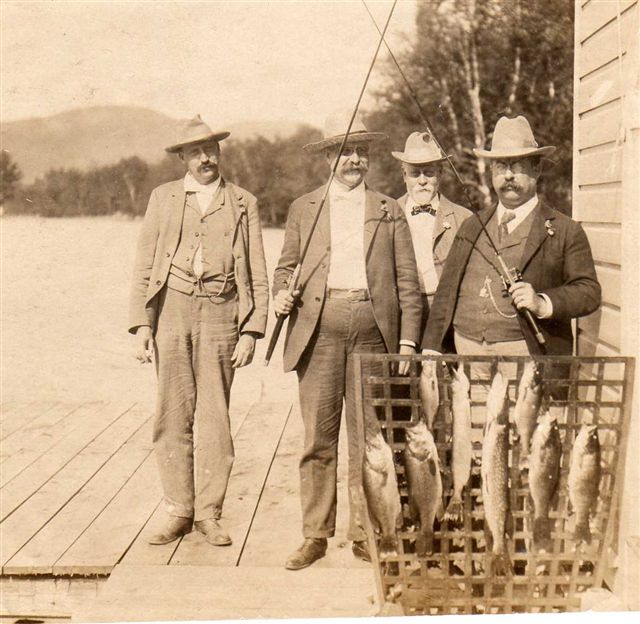Andebit et beaqui corendit, ut quostes esciendion re dit ad et prae parion es quia quas alibus sam, omnim faciden ducipidiat arum autem nobis enis es voat

Evolution of Tourism
 Teddy Roosevelt at Able Crook's Home on Brant Lake – Horicon Museum
Teddy Roosevelt at Able Crook's Home on Brant Lake – Horicon MuseumEasy access by water made this region the first heritage tourism destination. Americans came in search of the origins of the Republic. Urged on by tour books, landscape paintings and scenic cards, they found both the roots of their freedom and the spectacle of sublime wilderness. After 1808, steamboats made regular trips up and down Lake Champlain and soon plied the waters of Lake George. After 1823, packet boats could make the trip from the Hudson River, through the Champlain Canal, by water. Hotels greeted tourists at every landing. At the end of the nineteenth century, summer camps and resorts offered the health benefits of outdoor life. Railroad companies published maps and tourist guides to help their passengers find the perfect spot for their re-creation.
Automobiles changed the character of tourism in the twentieth century. Americans loved the independence the personal vehicle gave them. They could drive from site to site, discovering historic monuments commemorating heroic historic events along the way. Wherever they went for summer vacation, they needed entertainment. Dude ranches and theme parks provided cheerful distraction. Sailboat and motorboat races guaranteed leisure-time excitement. Nature itself drew hikers, campers, rock climbers, hunters and skiers.







